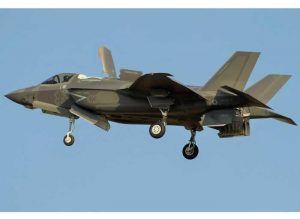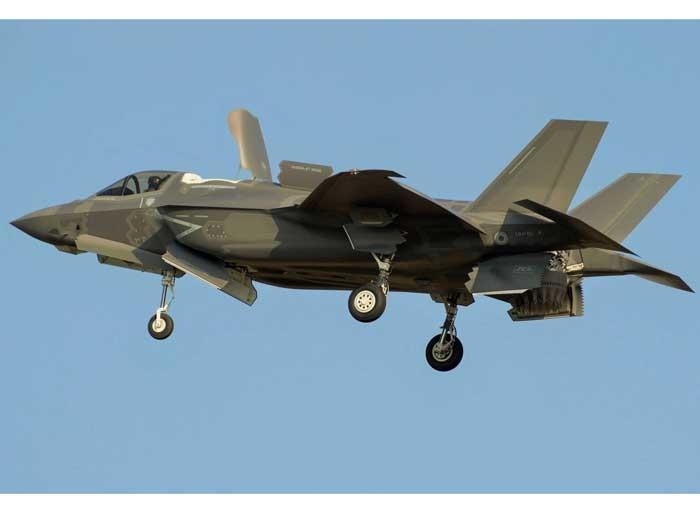2017-11-12 An important aspect of the F-35 final assembly facility in Fort Worth is the capability to produce three variants of the aircraft on the same assembly line.
Now that capability has been demonstrated off of the Italian line as the first F-35B built outside of the United States came off the Cameri line in May 2017.
That aircraft took its maiden flight late last month as well and will fly to Pax River in the United States early next year to conduct required Electromagnetic Environmental Effects certification.
 Italy’s first F-35B Lightning II, a Short Take Off and Vertical Landing (STOVL) variant assembled at the Final Assembly and Check Out (FACO) facility and known as BL-1, flew and hovered here for the first time today.
Italy’s first F-35B Lightning II, a Short Take Off and Vertical Landing (STOVL) variant assembled at the Final Assembly and Check Out (FACO) facility and known as BL-1, flew and hovered here for the first time today.
Lockheed Martin F-35 test pilot Paul “Hat” Hattendorf, flew BL-1’s first flight on Oct. 25. On Oct.30, during the third and final acceptance flight, Hattendorf successfully operated the jet in all STOVL modes, to include hovering over the runway
To date, eight F-35As have been delivered from the Cameri FACO; four of those jets are now based at Luke Air Force Base, Arizona, for international pilot training and four are at Amendola Air Base, near Foggia on the Adriatic coast.
After delivery to the MOD later this year, an Italian pilot is programmed to fly Italy’s first F-35B jet to Naval Air Station Patuxent River, Maryland, early in 2018 to conduct required Electromagnetic Environmental Effects certification.
On Sept. 7, 2015, the first Italian-produced F-35 built at the Cameri FACO made the first international flight in F-35 program history, and in February 2016, the very same aircraft was flown by an Italian Air Force pilot to the United States, making the F-35 Program’s first-ever trans-Atlantic crossing. In December 2016, the Italian Air Force’s first F-35As arrived at the first in-country base, Amendola Air Base.
In an interview with the then chief of the Italian Air Force, Lt. General Preziosa , the head of the IAF explained his thinking about the F-35B and how it fit into 21st century concepts of operations.
“We studied the issue carefully and for the kind of missions we face we needed the flexibility which the B can add to the fleet.
“We need to go to the mission not the airfield.
“We will operate in many areas where there are only short runways; the B allows us to operate in those conditions.
“We can mix the fleet and operate at sea on land, on our own ships or own others.
“It is the kind of flexibility, which we see as crucial to a 21st century setting.
“I will give you an example of what we don’t want. We planned to operate with the USMC in Afghanistan. But we were three months later in the deployment than we intended because our Tornados could not operate in the same conditions as the USMC. We had to take three months to build out the air base from which we would operate with them.
“Time is crucial to many of the missions in which we will be engaged.
“The Bs give me a more rapid insertion aircraft.”


